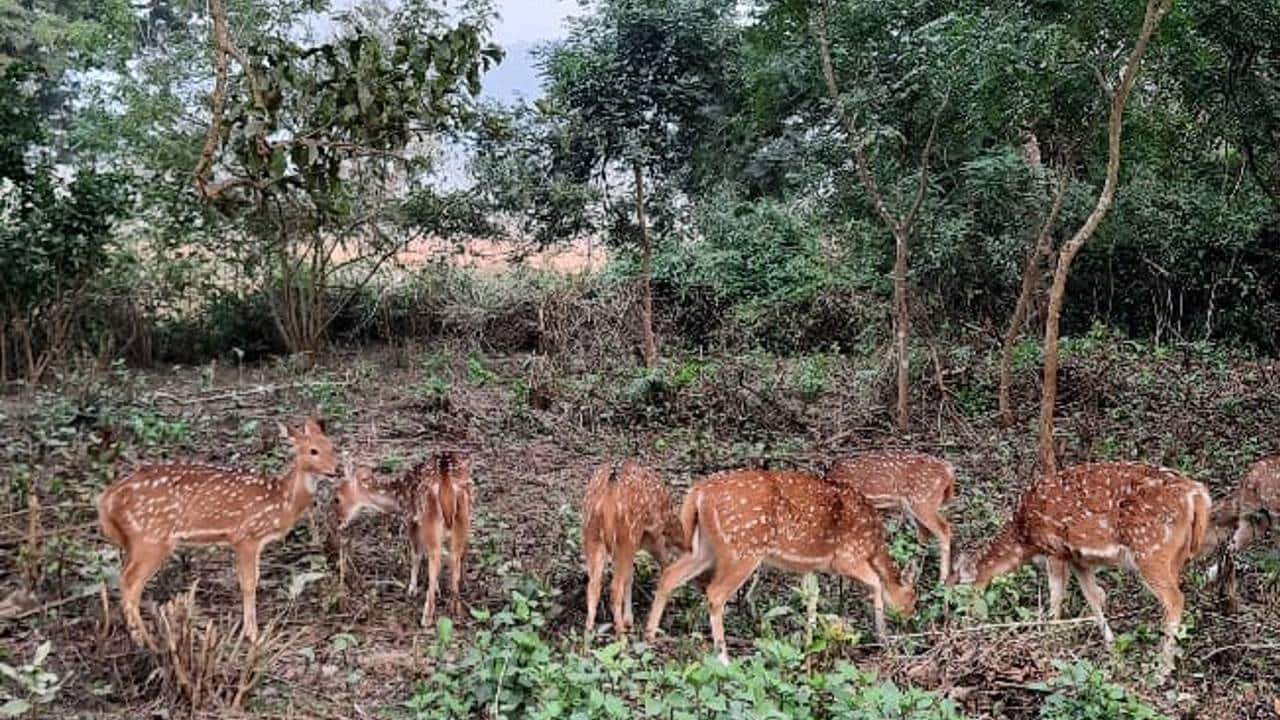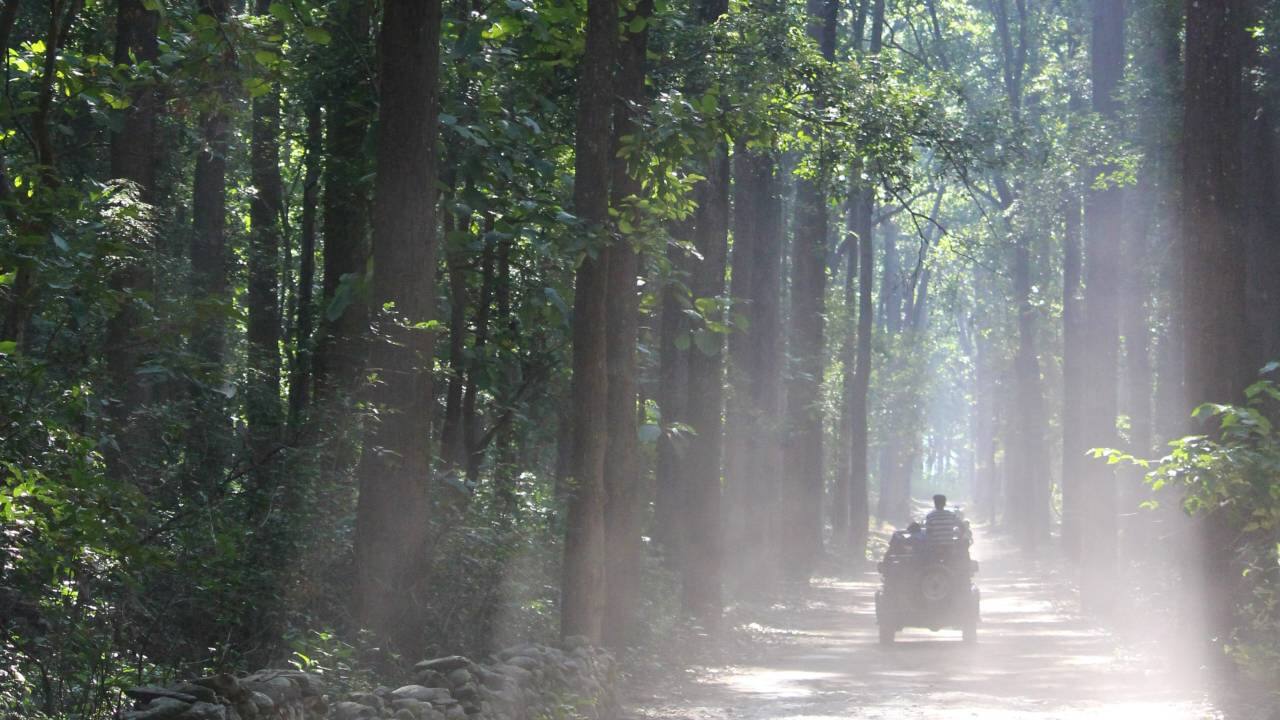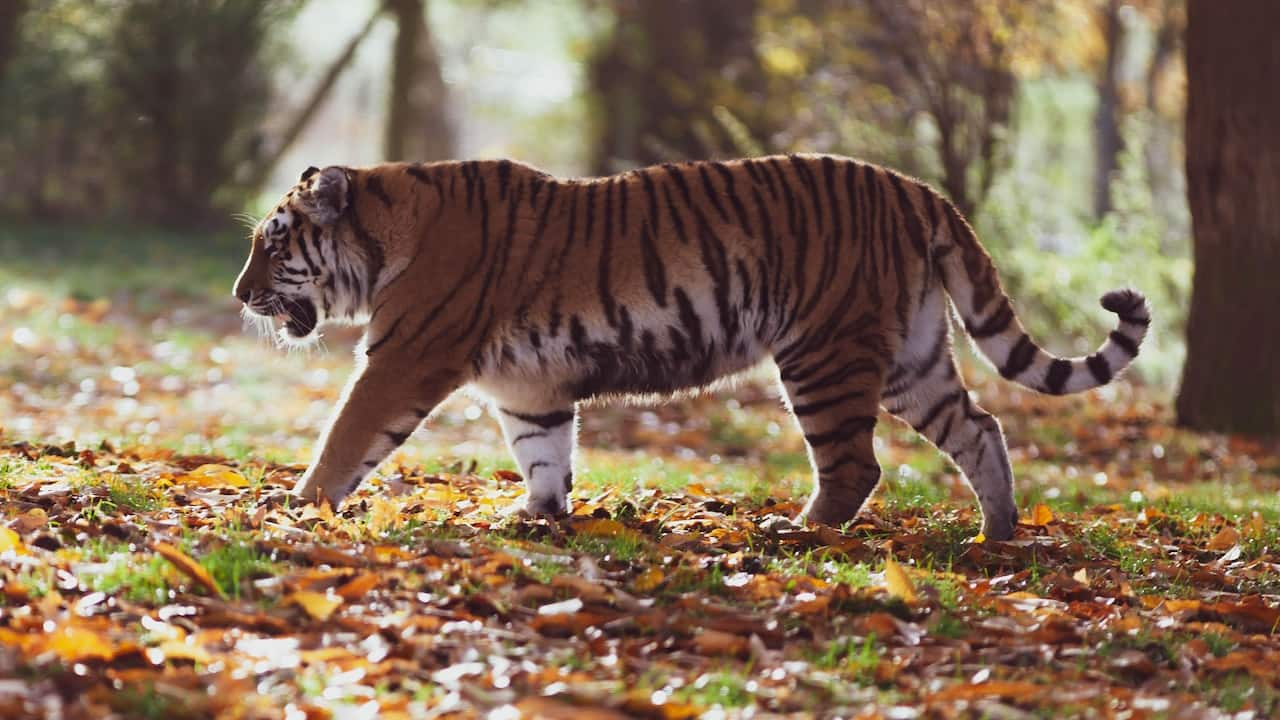



It’s 4 pm on a warm March afternoon. Our jeep is slowly trailing behind a tigress, whom the local guides and drivers fondly call ‘Pedwalli’. Her love for climbing trees as a cub earned her this moniker. She’s the boss in these woods. There’s a swag in her walk, and a quick flick of her tail lets you know she’s done with you. A sniff here and a quick scent marking there, and she’s off into the dense canopy of trees by the road.
It’s our first safari in Uttarakhand’s famous Jim Corbett National Park. If you’ve ever planned a trip, chances are you too were told to abandon all hope ye who enter here. Many have returned without a tiger sighting. The forests of Bandhavgarh in Madhya Pradesh or Tadoba in Maharashtra are probably far safer bets for spotting the elusive big cat.
It’s because unlike many other tiger reserves in the country, the landscape at Corbett is not dominated by flat, dry lands. Therein lies its charm. Depending on the zone you pick, you could be navigating steep ascents and descents, or gazing at grasslands that go on for as far as the eyes can see. Rivulets from the Ramganga river snake through parts of the park and the Kalagarh dam is nearby for animals seeking out water on a hot summer day.
 There are more than 1,000 Asian elephants within the Corbett Tiger Reserve (Photo by Sneha Mahale)
There are more than 1,000 Asian elephants within the Corbett Tiger Reserve (Photo by Sneha Mahale)
Stars in stripes
What locals take pride in, however, is the park’s contribution to wildlife conservation. It is India’s first-ever national park, established in 1936. This was also where the ambitious species conservation programme, Project Tiger, was launched on April 1, 1973. It made Corbett National Park one of the country’s first nine tiger reserves. The draft for tiger conservation, which is now applied to every other reserve in the country, comes from here.
At last count, there are 252 tigers spread over 1288.31 sq km of the reserve. But tourists can spot a lot more than the majestic big cat. There are 55 mammal species in the park, including the leopard, bear, large herds of Asian elephants, and even sambar, barking and hog deer. Sightings of the yellow-throated marten and otters are rare but possible.
 A herd of deer at Jim Corbett National Park - established in 1936, it is India’s first national park. (Photo: Shantanu Guha Ray)
A herd of deer at Jim Corbett National Park - established in 1936, it is India’s first national park. (Photo: Shantanu Guha Ray)
We saw neither, but did get a glimpse of the fish-eating gharial - a critically endangered reptile - basking on the banks of a rivulet. It’s one of Corbett’s many success stories. In 1966, the creation of the Ramganga reservoir had led to the submergence of sandy beaches and resulted in a decline of the park’s gharial population. Captive-bred individuals from Kukrail Forest Reserve were introduced in the 1980s to support the natural population in the Ramganga. As of 2022, there are 116 gharials in Corbett and it remains one of three important breeding grounds for them.
There have been setbacks too. Wild dogs, striped hyena and the Indian fox that were listed in the National Park at the time of its formation can no longer be found here. Chowsingha and swamp deer that were often seen outside the park have now completely disappeared from the region. A lone swamp deer was last sighted in the Dikhala zone in 1977.
 On a jeep safari inside Jim Corbett National Park, Ramnagar, Uttarakhand, India. (Photo: Jeshika Sinojia via Unsplash)
On a jeep safari inside Jim Corbett National Park, Ramnagar, Uttarakhand, India. (Photo: Jeshika Sinojia via Unsplash)
Tourist attraction
The park also brings in birders from all over the country and abroad. There are 600 avian species to be spotted here - from the common grey heron and cormorant to the rare Hodgson’s bushchat and great slaty woodpecker. We lucked upon a fish owl and her baby, peeking out of their nest in a tree trunk, and a crested serpent eagle scanning the grasslands for prey.
The Royal Bengal tiger, however, remains the main attraction. To give tourists the best chance to sight one, Corbett is divided into multiple ecotourism zones. Some are open throughout the year; others close during the rainy season. Authorities at the park ensure that the impact of tourism is low on the core forest. Safaris into zones such as Dikhala, which is among the oldest parts of Corbett, have to be booked online days in advance and usually, at a premium rate. Limited jeeps are allowed, and to be able to go on a safari within Dikhala, you need to have a night reservation at a forest rest house within the park.
Guides insist that you can sight the tiger in almost every zone, and frequently at Jhirna and Bijrani. The beauty of Dikhala, however, is unmatched, with large grasslands, dense sal forests, and crisscrossing rivulets of the Ramganga dominating the landscape. If you enjoy the serenity that comes from just being in a forest, this is where you need to be. It’s while we were taking in its beauty that we spotted our second big cat - a male this time, walking in the grasslands.
Watching him walk freely on his home turf is proof of Project Tiger’s resounding success. As per the last census, the number of big cats in the wild has almost doubled - from 1,411 in 2006 to 2,697 in 2018. India’s now home to nearly two-thirds of the world’s tiger population. Impressive, to say the least.
 Remember: Safaris into zones such as Dikhala have to be booked online days in advance and usually, at a premium. Limited jeeps are allowed, and to be able to go on a safari within Dikhala, you need to have a night reservation at a forest rest house within the park. (Representational photo by Theother Kev via Pexels)
Remember: Safaris into zones such as Dikhala have to be booked online days in advance and usually, at a premium. Limited jeeps are allowed, and to be able to go on a safari within Dikhala, you need to have a night reservation at a forest rest house within the park. (Representational photo by Theother Kev via Pexels)
The road ahead
Yet, the dangers to our national animal are very real. Loss of habitat, genetic isolation due to disappearing tiger corridors, disease, territorial fights and even poaching pose severe threats to the endangered species’ long-term survival. Just in 2022, 121 tigers were reported dead in the country. While forest officials say the rise in tiger population also increases deaths due to natural causes and animal conflict, the Ministry of Environment, Forest and Climate Change has expedited its investigation to decode the high death toll.
2023, however, could be a landmark year for the tiger and Corbett Tiger Reserve. Prime Minister Narendra Modi is expected to kick off celebrations in April to mark 50 years of Project Tiger with the release of the 2022 tiger census, and other announcements. The timing could not have been better. A renewed interest in Project Tiger might just be the booster shot tiger conservation in India needs. It will ensure that ‘Pedwalli’ and her future generations thrive in the forests in Corbett and around the country for years to come.
Getting there
Corbett National Park is well-connected by road and rail. It is a five to six-hour drive from Delhi. The closest station is Ramnagar, while Pantnagar Airport is 80km away. There are a wide range of resorts and hotels available, depending on your budget.
Best time to visit
March to June, if you wish to see the tiger. November to February is a good time to visit for birding. Visitors can book permits for jeep safaris and canter rides on the official website.
Discover the latest Business News, Sensex, and Nifty updates. Obtain Personal Finance insights, tax queries, and expert opinions on Moneycontrol or download the Moneycontrol App to stay updated!
Find the best of Al News in one place, specially curated for you every weekend.
Stay on top of the latest tech trends and biggest startup news.